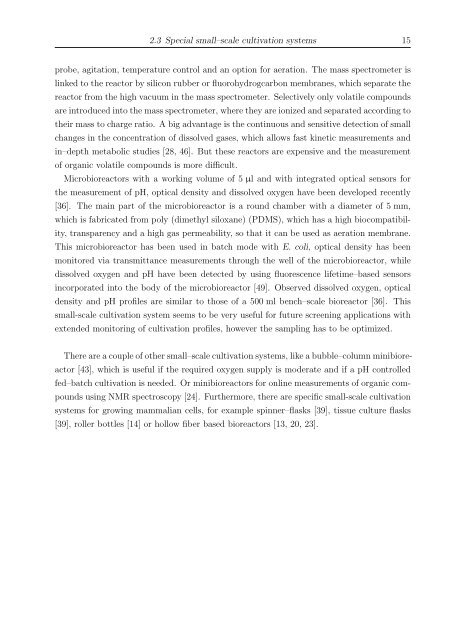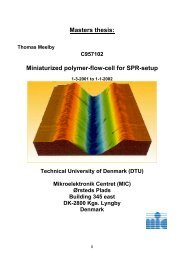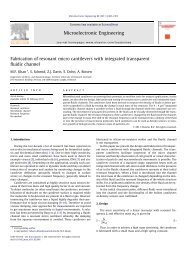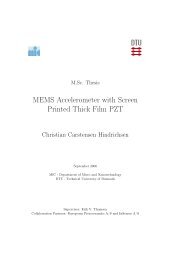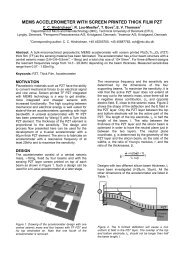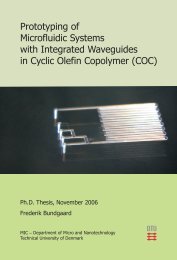C - DTU Nanotech - Danmarks Tekniske Universitet
C - DTU Nanotech - Danmarks Tekniske Universitet
C - DTU Nanotech - Danmarks Tekniske Universitet
Create successful ePaper yourself
Turn your PDF publications into a flip-book with our unique Google optimized e-Paper software.
2.3 Special small–scale cultivation systems 15<br />
probe, agitation, temperature control and an option for aeration. The mass spectrometer is<br />
linked to the reactor by silicon rubber or fluorohydrogcarbon membranes, which separate the<br />
reactor from the high vacuum in the mass spectrometer. Selectively only volatile compounds<br />
are introduced into the mass spectrometer, where they are ionized and separated according to<br />
their mass to charge ratio. A big advantage is the continuous and sensitive detection of small<br />
changes in the concentration of dissolved gases, which allows fast kinetic measurements and<br />
in–depth metabolic studies [28, 46]. But these reactors are expensive and the measurement<br />
of organic volatile compounds is more difficult.<br />
Microbioreactors with a working volume of 5 µl and with integrated optical sensors for<br />
the measurement of pH, optical density and dissolved oxygen have been developed recently<br />
[36]. The main part of the microbioreactor is a round chamber with a diameter of 5 mm,<br />
which is fabricated from poly (dimethyl siloxane) (PDMS), which has a high biocompatibil-<br />
ity, transparency and a high gas permeability, so that it can be used as aeration membrane.<br />
This microbioreactor has been used in batch mode with E. coli, optical density has been<br />
monitored via transmittance measurements through the well of the microbioreactor, while<br />
dissolved oxygen and pH have been detected by using fluorescence lifetime–based sensors<br />
incorporated into the body of the microbioreactor [49]. Observed dissolved oxygen, optical<br />
density and pH profiles are similar to those of a 500 ml bench–scale bioreactor [36]. This<br />
small-scale cultivation system seems to be very useful for future screening applications with<br />
extended monitoring of cultivation profiles, however the sampling has to be optimized.<br />
There are a couple of other small–scale cultivation systems, like a bubble–column minibiore-<br />
actor [43], which is useful if the required oxygen supply is moderate and if a pH controlled<br />
fed–batch cultivation is needed. Or minibioreactors for online measurements of organic com-<br />
pounds using NMR spectroscopy [24]. Furthermore, there are specific small-scale cultivation<br />
systems for growing mammalian cells, for example spinner–flasks [39], tissue culture flasks<br />
[39], roller bottles [14] or hollow fiber based bioreactors [13, 20, 23].


